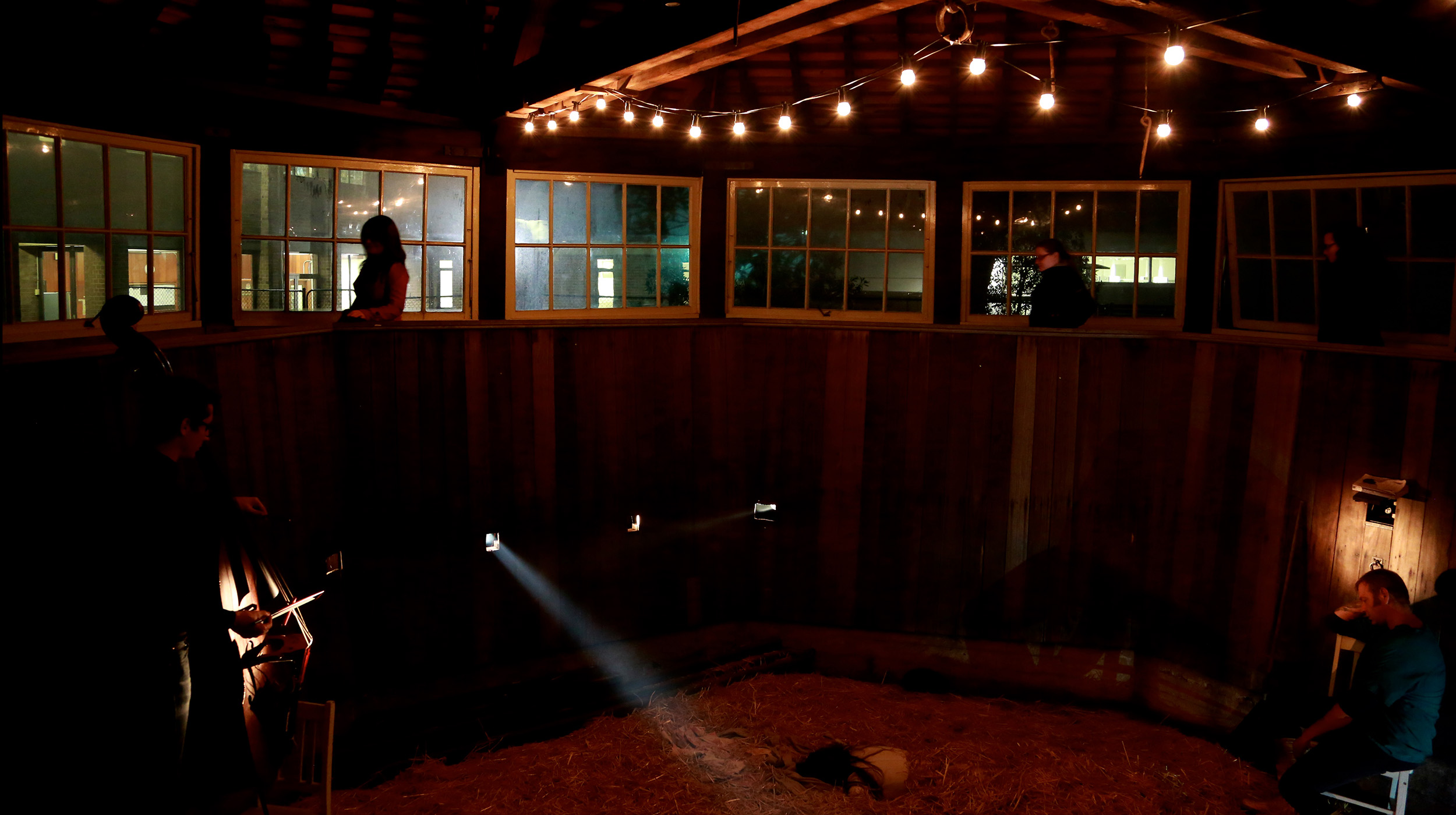
Reflecting on the Translation of SEI’s Research through Theatre
27.11.2017
words by Anastasia Mortimer
If we are to convey climate change issues to the wider public in impactful ways, academic knowledge translation is required. SEI recognises the pressing need to communicate our research to wider audiences, and that this requires the use of innovative mediums for communication, that is outside of the traditional approaches to disseminating academic knowledge.
Since 2013, the Sydney Environment Institute has collaborated with The Living Room Theatre, led by Artistic Director & CEO, Michelle St Anne (SEI’s Deputy Director in her spare time), who has translated SEI’s research into four large-scale performance artworks: She Only Barks at Night; They Come for them at Night; She [Still] Cries at Night: An Earth Hour event and Black Crows Invaded our Country.
St Anne’s translation and interpretation of SEI’s research in her theatrical works have opened academic knowledge on climate change to a wider audience, and broadened civic discourse on the impacts of climate change, while influencing people to make positive changes and take action.
The Sydney Environment Institute will be collaborating with The Living Room Theatre for ‘Anastasia: Communicating heat & climate vulnerability through performance.’ This is a project funded by the Pop-up Research Lab scheme awarded by the Sydney Social Sciences and Humanities Advanced Research Centre (SSSHARC). The project is exploring the real-life impacts of heatwaves as well as the theoretical problems which come from communicating academic research of shock climate events to non-academic audiences such as policymakers, community organisations, and the general population.
In continuing to interpret SEI’s research, St Anne is developing a series of three studio works for the project, which aims to communicate the physical, ethical and emotional effects of heat wave related deaths which are a core component of the SSSHARC project. St Anne explains that the first work “follows the life of an elderly woman, living on her own, who dies from heat exhaustion, a condition which is predicted to become more common with temperature rises caused by climate change.”
The series will explore human emotion and experiences of climate change, and St Anne’s previous collaborations with the Sydney Environment Institute have tended to examine how the issues of climate change manifest in the everyday experiences of people, with a particular focus on those vulnerable in society.
‘She Only Barks at Night (2015)’ was created in association with HfE Observatory, the Macleay Museum, and the Faculty of Veterinary Science, and was a part of the Stuffed, Stitched and Studied exhibition at the Macleay Museum. The performance merged academic research on equine science and female hysteria in the nineteenth century to the present day and was translated through contemporary performance theatre, installation, and exhibition.
‘They Come for them at Night (2015)’ explored the issue of sea level rises in the Pacific and its effects on culture – family, food, and memory. The performance was inspired by the Honours Thesis of SEI PhD Candidate, Luke Craven, and provided an original insight into the fragility of the Pacific Islands and their people. Luke Craven’s research was weaved with sound art and image, and performed by young girls in an effort to truly understand the vulnerability of humans as we face climate change.
‘She [Still] Cries at Night: An Earth Hour event (2016)’ translated the research of SEI PhD Candidate, Leah Lui-Chivizhe, to communicate the plight the Green Tea Turtle as they to combat climate change and plastic pollution, on their journey to the beaches of the Torres Strait to hatch their eggs.
‘Black Crows Invaded our Country (2017)’ in partnership with the City of Sydney, explored the haunting and complex issue of human migration in the age of the Anthropocene. The theatrical work applied SEI’s research on the Anthropocene as a framework to tell story from, with a particular focus on those who are most at risk of losing adequate food and shelter in the face of climate change.
In the four theatrical works, St Anne merged academic research with her own artistic palette, as a way to translate complex academic research into new forms of expressions, allowing the audience to see climate change research through a different lens.
St Anne explains that the goal in creating theatrical works which explore the issue of climate change is to “communicate environmental research through new mediums, and to contribute to a larger conversation between artists, creatives, industry, and academia about the plight of the earth and its peoples in the face of climate change.”
This article contributes to the research of the Anastasia Project and was originally published in the University of Sydney publication the SSPS Review Issue 6 2017
Anastasia Mortimer is the blogger and news post writer for The Living Room Theatre and during the day she is the Knowledge Translation Officer at The Sydney Environment Institute. Anastasia completed Honours in Sociology at the University of Sydney in 2016, and was awarded First-class Honours. Her thesis examined discourse produced by the Western Australian State Government and unequal relations of power between the State Government and Kimberly First Australians in the case of the proposed LNG development on James Price Point.

